












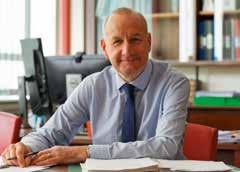
Welcome to the Winter 2024 edition of Chem@Cam. As I write, term time is well under way and, as ever, I am caught off guard by what a step change that makes to life in the department. The hallways are full of undergrads moving between lectures, the practical labs are hives of activity, and there often seems to be a supervision going on around every spare table in the building.
Research is, of course, a year-round activity, but even here the start of the new academic year brings a burst of activity as we are joined by new research students. This year I had the pleasure of welcoming over 80 new PhD and MPhil students, from around 20 different countries, to the department. The energy and vigour they bring is key to our success, and it is wonderful that so many talented people want to pursue their graduate studies here.
In this issue of Chem@Cam you can read about the activities of our summer interns, several of whom are supported by generous donations from alumni, and a new scheme to widen access to PhD studentships. These initiatives, along with our ongoing focus on promoting and supporting under-represented groups, are key in making the department an open and inclusive place.
You can also read about the symposium held in September to mark the life and scientific achievements of the late Jim Staunton who, over a long and distinguished career, had a significant impact not only through his science but also through his support of the careers of others.
Finally, let me draw your attention to our Open Day in March next year. We are offering alumni reserved places at Peter Wothers’ lecture, followed by a light lunch (see the back cover for details on how to register). We love seeing our alumni return, so do join us if you can.

James Keeler Head of Department
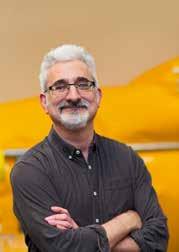
Chem@Cam Yusuf Hamied Department of Chemistry University of Cambridge Lensfield Road Cambridge CB2 1EW 01223 763079
news@ch.cam.ac.uk www.ch.cam.ac.uk @ChemCambridge
Views expressed in this magazine are not necessarily those of the Editor, the Yusuf Hamied Department of Chemistry or the University of Cambridge.
Print: Precision
Chem@Cam is published twice a year, and is sent free to chemistry alumni, postdoctoral researchers, retired staff and friends of the department.
CONTRIBUTORS
Editor
Diane Harris
Contributor and design
Caroline Reid
Photography
Nathan Pitt
Michael Webb

In June, Grey group spinout Nyobolt received nation-wide coverage when it successfully charged its prototype electric car battery from 10% to 80% in four minutes and 37 seconds.
The spectacular live demonstration took place on a test track in Millbrook using a specially-built concept sports car.
Nyobolt is developing technology that originated in the Grey group to design, construct and manufacture batteries for many different applications, which fully charge in minutes with an advantageous long cycle life for improved sustainability and economy.
Nyobolt was co founded by Professor Dame Clare Grey, Dr Kent Griffith and Dr Sai Shivareddy.
The company plans to have its new battery installed in some electric vehicles within the next year. This will certainly be a step toward alleviating charge anxiety.
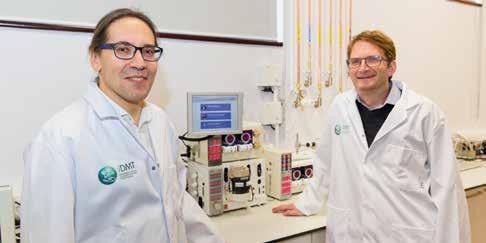
The Innovation Centre in Digital Molecular Technologies (iDMT) was launched as a Centre of Excellence in July this year. The iDMT evolved from a collaborative project co-funded by industry, the University of Cambridge and the government, which has been active since 2020. Over the last four years the iDMT has built robotics and high-throughput laboratories, helped multiple small companies launch new products and several larger companies to upskill their employees.
The new Centre of Excellence is a member-funded organisation that is promoting the development and adoption of digital tools in chemical R&D and manufacture.
Co-Director Yusuf Hamied 1702 Professor of Chemistry Matthew Gaunt comments: “The iDMT is concerned with academic research, global pharmaceuticals, and enterprises. We are trying to address how to facilitate synthetic chemistry on any scale.”
Co-Director Professor Alexei Lapkin (above left), from the Department of Chemical Engineering and Biotechnology, adds: “Digitising chemistry is not only super-exciting academically but we can also see how completely new business
models can emerge when a digital infrastructure and AI tools are available. Ultimately, we aim to create solutions that can be applied to research in chemistry and chemical engineering, to solve practical challenges of transition to sustainability, and to be applicable across many industries.”
The centre connects academic researchers and industrial partners. Its office and laboratories are hosted in the department and provide the opportunity to rapidly transform academic ideas and industry challenges into solutions. The centre works with small companies and start-ups which have already demonstrated the ability to rapidly productise academic ideas.
Over the summer, the centre organised a Summer School to train participants, from postgraduate level and industrial researchers across career stages, in the latest developments in AI and lab automation for chemistry research and development. This school is part of the delivery programme for the iDMT industrial members and “it was more successful than I could have imagined upfront,” says Alexei. “The engagement was good and there is appetite for another instance next year; we hope to bring it back in 2025.”

Professor Erin Johnson is a Royal Society Wolfson Visiting Fellow from Dalhousie University in Canada. She works in theoretical and computational chemistry. As part of her fellowship, she has been visiting the department for a flexible 12-month period to make connections and establish collaborative research projects. “It’s a very valuable experience and opportunity,” says Erin.
She is hosted by Professor Angelos Michaelides and she is also working with the Department of Physics and the Department of Materials Science and Metallurgy. Since arriving she has established several new research projects that she is hoping to work on over the coming years and plans to integrate the workflow with her group in Dalhousie.
Royal Society Wolfson Visiting Fellowships are awarded to talented international research leaders to foster international collaborative links and enrich scientific research. Erin first visited the department in 2019 when she gave a seminar. She says her enjoyment of Cambridge and our department was a contributing factor in applying for the fellowship.
With her own group in Dalhousie and five research students, Erin has multiple projects on the go. One example is developing methods to predict which (out of very many possible arrangements) will be adopted by molecules when they pack together to make crystals. “It’s like building a structure with Lego; my work figures out which arrangements are the most stable and likely to form,” she explains. This work is valuable for anyone developing solid state materials, for example, in the pharmaceutical industry.
The group also studies the electronic structures of materials to understand how electrons behave in different substances, which has implications for many other technologies.
Computational and theoretical chemistry was something that Erin was naturally drawn to: “I was fortunate to do some research in computational chemistry as an undergraduate at Carleton University [Canada], and just continued on in that area. I was interested in theoretical and computational chemistry because it intrigued me how you could use maths to predict virtually everything you can see and touch in the world around us. It’s all determined by chemistry.”
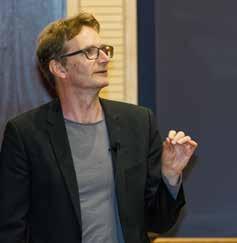
Professor Matthew Gaunt delivered his inaugural lecture as the holder of the Yusuf Hamied 1702 Chair of Chemistry in July.
Matthew spoke about his group’s major contributions to the field over the last 20 years before describing current research developing catalysts that impart new reactivity into organic molecules. The overarching theme of the lecture was the pursuit of inventing and harnessing novel chemical reactivity concepts that open new opportunities for synthesisdriven solutions to small molecule and biomacromolecule-based challenges.
He commented: “Functional molecules that we need to impact our everyday lives are getting more complicated –inevitably we need better tools to build them. That’s where our work starts.”
He also described current research efforts developing new methods to insert single carbon atoms into complex molecules to modify their physicochemical and biological properties, new activation modes to enable catalytic cross coupling and the development of a synthetic toolkit for the functionalisation of nucleic acids.
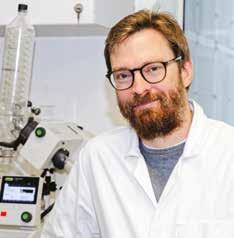
Recycling plastic waste is difficult and often unprofitable. Reisner group spinout Protonera has the perfect solution.
The Reisner lab has developed technology which can convert waste plastics with sunlight into hydrogen gas and valuable compounds such as glycolate, which is used in the cosmetics industry. Now the team has received initial funding to scale up this technology.
The process is based on collaborative research between the Departments of Chemistry and Biochemistry. It relies on enzymes which break down plastic waste, and synthetic catalysts that harness solar power to upcycle the solubilised plastics into high-value end products.
“Current recycling techniques often lose money,” explains Erwin, who co-founded Protonera and is Chief Scientific Officer. “They rely on getting high-quality plastics which need to be sorted and washed. By the end of the
process the recycled plastic costs as much as virgin plastic that is produced from fossil fuels.”
In contrast, food-contaminated waste is ‘ideal’ for the Protonera technology. “We are not competing with other recyclers, because we can use plastics that currently cannot be recycled and so are being incinerated or put into landfill,” explains Erwin.
“The plastic-degrading enzymes work really well with contaminated plastics,” says Chief Executive Officer and cofounder Dr Jack Guo. “Not only can we use lower-grade materials, but we’re also able to produce high-quality, foodgrade products.” Jack, who is an expert in enzymes, completed his PhD in the Department of Biochemistry with cofounder Biochemistry Professor Florian Hollfelder, who is the Scientific Adviser. The fourth co-founder is former Reisner PhD student, Dr Subhajit Bhattacharjee.
The technology can also be used to create low-carbon, high-purity hydrogen and compounds for use in the chemical industry. It works under ambient pressure and in normal temperatures, which is less expensive and more environmentally friendly than other methods. “We are not just making hydrogen but also mitigating waste,” explains Erwin. “We convert the CO2 into valuable compounds like glycolate, which at the same time prevents the production and release of damaging CO2 into the atmosphere.”
“We need more efficient catalysts that harvest light better and produce
more hydrogen from solar input. We want to improve each individual step and connect them all in a continuous process,” says Jack. “We will be working on the catalysts and the process.”
The team have been working with the Peterborough and Cambridge Waste Recycling partnership, who provide samples and feedback. “This is a huge opportunity for plastic recycling companies to transition to new technology. They are engaged and interested. It’s a bit of a mismatch in scale, but they can see the potential,” says Erwin.
The scale-up project has secured funding via the MATcelerate and TIF programmes administered by Cambridge Enterprise, which aims at transferring university-developed technology to market. Protonera has also received support from Founders at the University of Cambridge, an accelerator programme supported by Cambridge Enterprise.
“This funding will help us build our first bench-top reactor, that will be able to transform one kilo of plastic waste into high-purity hydrogen in one day,” says Jack.
“My ambition is translating research from our group into the real world,” explains Erwin. “Any contribution we can make to use sunlight to power the chemical industry is worthwhile. If we can turn waste plastics into low-carbon, high purity hydrogen, we all win.”

DrJohn Morgan has been appointed Assistant Professor in Theoretical Chemistry jointly between Downing College and the department.
After graduating in Natural Sciences at Downing, John completed a PhD in theoretical chemistry with David Wales in 2016 where, in addition to research, he also conducted supervisions and demonstrations. After a oneyear postdoc in pure research at the University of Michigan, John returned to Cambridge.
As a postdoc in the Wales group John was happy to take on further supervisions, demonstrations and practicals because he had missed the variety. He also enjoyed the teaching. “When you have to teach something to someone else you realise you have to fully understand it,” he says.
John continues to enjoy the variety of his many roles. At Downing he is a Fellow in Chemistry, Director of Studies
and Undergraduate Tutor. He is involved in admissions and interviews, a task which he also fulfilled at Magdalene College for two years. “It’s quite a taxing job, but very important. We are always looking for the brightest and most academically able.”
Downing College Senior Tutor Professor Guy Williams, who taught John as an undergraduate, says: “We are absolutely delighted that John has been appointed as an Assistant Professor. He has a great rapport with the students in Downing who regard his teaching very highly, and he is a great contributor to the College community”.
As a University Theory Teaching Officer in the department, John has already taken a major role in revising theory practicals.
“A modern research chemist must not only be able to run complex computer software, but they’ve also got to understand the methods. You can’t just treat the computer as a black box.”
He is now helping revise the upper year theory courses and the practicals that go with them, as well as being involved in the department’s broader review of the curriculum and teaching structure.
John says that working in both a college and department environment is a real advantage: “I get to see the different aspects of what everybody’s doing from both perspectives. At a college it’s more about helping individual students, while the department sets the wider course structure. It definitely helps relations between the two groups.”
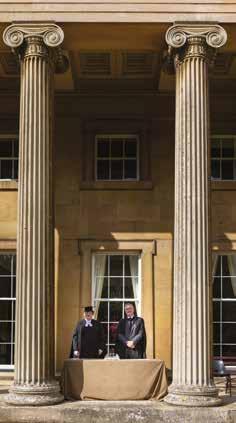
Head of Department James Keeler says: “This post further strengthens our commitment to undergraduate teaching and is also important in maintaining the strong and mutually beneficial links between College and University teaching.”
In the little spare time he has, John is a member of the Cambridge University Yacht Club, where he has trained to become a qualified Yachtmaster and Skipper. “I have to be available by phone and email during work hours, so I love the idea of being out on the water and not reachable at all.”
Dr Leah Webster is developing catalysts for a more sustainable future.
Leah is a postdoc in the Webster group researching the second most-abundant metal on earth – titanium – and searching for new ways to use it as a catalyst. Titanium is already used as a catalyst in processes like making plastics because of its amazing properties such as its stability and low cost, and Leah wants to push this catalyst’s limits.
Titanium and phosphorus
Titanium catalysts are complemented with phosphine gas which tunes the catalyst’s properties and adds structural support, but these phosphine compounds can be difficult to make. Leah is researching faster, cheaper ways to make phosphine compounds in the laboratory.
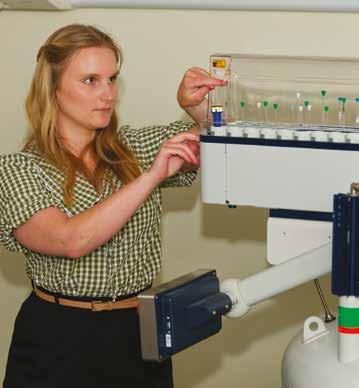
Leah explains: “Currently, the main methods for making phosphine compounds generate a lot of waste. They typically start with large, bulky molecules, using the relevant parts and discarding the rest. I want to start with phosphorous in its simplest form and build the exact molecule we need for cheaper production and to reduce waste.”
Leah is one of the first members to join Dr Ruth Webster’s group since it moved to Cambridge last year (see Issue 67). Ruth adds: “We need new, cost-effective catalysts that replace the rare ones we currently use. My group’s part in a greener future is making catalysts more accessible, especially in industries such as sustainable energy.”
Sustainable catalysts
Catalysts are essential in many chemical reactions but are frequently made of rare metals, such as platinum in car catalytic converters. Acquiring these metals can have significant environmental impacts from mining and may also pose toxicity risks, making them hazardous to handle.
Sustainable catalysts, like the ones Leah is designing, can minimise these problems and be safer and cheaper to use.
“What’s so great about titanium is that it is low cost, really abundant and non-toxic,” says Leah. “Hip replacements are made from titanium, for example, so using titanium is a safe catalyst for many industries, especially for pharmaceutical research.”
Leah recently won a poster prize for this research at the Royal Society of Chemistry Coordination and Organometallic Chemistry Discussion Group conference in 2024.

Leah is continuing her PhD research from Imperial College London where she developed a library of different titanium pincers. A molecular pincer is a claw-shaped molecule that binds tightly to another molecule, usually in two or three places. The tight grip, like a crab claw, makes these molecules useful for making new compounds.
The library was developed as a resource for researchers to discover new transition metal complexes that use titanium as a base.
Leah says: “I met Ruth when she came to give a talk at Imperial where she explained her work on transition metals and really homed in on earth-abundant metals, mostly iron.
“I had gained extensive experience with titanium during my PhD research and I realised that I could apply the same approach she was using with iron to titanium.”
Leah now uses facilities all over the department from NMR spectroscopy to X-ray diffraction to characterise and uncover the full potential of titanium complexes.
From a small town
Leah grew up in a small town in the English midlands where everyone knew her, so moving to the University of Manchester for her bachelor’s degree was a big change.
“I have an older sister who loves languages and, because she was my role model, I always thought that I would study languages too. Now I speak a little bit of German, but not a lot. Alas!
“It was my physics teacher, Mr Richardson, who suggested I take physics because I love tables and trends and I think the periodic table is a work of art. Later I moved to chemistry because my interests leaned towards chemicals and characterising them.
“My biggest cheerleader is my dad. He has no chemistry experience at all but he still read my entire PhD thesis. He said ‘I don’t understand any of it but it looks really impressive!’”

Over 70 alumni (and many more online) attended our September Alumni Festival event, where members of the Zhang lab explained how they are working alongside nature to generate renewable energy.
Sunlight is an abundant source of energy that nature converts into fuel through the process of photosynthesis.
Jenny and her team are trying to probe and re-wire this process using materials chemistry. They are particularly interested in microorganisms called cyanobacteria, which are capable of photosynthesis. In their presentation, Jenny and two of her PhD students, Robin Horton and Loris Marcel, explained how they are using electrodes to capture the energy created by the cyanobacteria and turn it into electrical signals that could also be used to generate sustainable fuels.
This process of semi-artificial photosynthesis could improve the efficiency, sustainability and cost of producing bioenergy from the sun. Jenny concluded: “Our research addresses the challenges of generating clean energy, protecting the environment, mitigating climate change and even improving human health.”
We want to additionally thank Dr Evan Wroe and PhD student Shella Willyam, also in the Zhang group, who volunteered on the day.

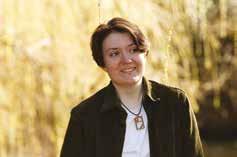
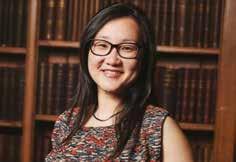

Chem@Cam
editor Diane Harris is retiring after ten years of alumni development, communications and REF support in the department.
It is time for me to hang up my red pen and retire. It has been a pleasure and honour to be editor-in-chief of the last nine print editions and four summer e-versions of Chem@Cam. It was in the dark days of the 2020 lockdown that I found myself as editor, writing stories in my living room and learning to interview researchers via the then relatively unknown ‘magic’ of Zoom. I am deeply grateful to preceding editors Rachel Gardner and Carmen Pryce, with whom I had a tiptop apprenticeship (as well as a jolly good time).
I’m also thankful to my current colleague Caroline Reid, who writes articles, helps cut down my wordiness and designs the layout (aided by the skilled and ever-mellow graphic designer Mark Mniszko); and our first-rate photographers Nathan
Pitt, Michael Webb and Gabriella Bocchetti (now at the Judge Business School), who are so accommodating to our (often!) last-minute requests.
I will miss our wonderful Department of Chemistry very much; I am constantly inspired by the incredible science that is taking place here every day, and particularly by the motivation of the students and researchers who want to use chemistry to make the world a better place. I will most especially miss the colleagues and friends I have worked with over the past ten years, though I plan to be here for our wide-ranging book club discussions and bake-off tastings! But I now need some time to do some other stuff. As Lucille Ball says: “I’d rather regret the things I’ve done than regret the things I haven’t done.”
Diane originally joined the Department in 2014 to help harvest and organise the vast amounts of statistical, financial and scientific information required for our very successful 2014 Research Excellence Framework submission. REFs are crucial for securing ongoing government support and demonstrating the quality of our research, and it really is hard to imagine how we would have coped without her.
Diane stayed on to carry out special projects and she soon identified a need to enhance our communications and alumni engagement activities. She helped update the website, improved our social media presence and connected with alumni through popular events like our “Chemistry Call My Bluff” wine tastings and Diversity in Chemistry seminars. Diane became Chem@Cam editor in 2020, since when she has gradually changed its character in subtle ways, resulting in the exceptionally professional, crisp and appealing publication before you. She also reprised her support role for the 2021 REF.
Diane has been a huge source of support and friendship for successive Heads of Department for the past ten years. Her wise counsel will be hugely missed, and we wish her well in her future adventures. Jeremy Sanders and James Keeler
Over 80 former students and colleagues of the late Professor Jim Staunton came to the department for a memorial symposium in September to celebrate his life and career.

Jim’s research group in Cambridge studied the biosynthesis of polyketides and biomimetic synthesis from 1969 until he retired in 2001. Jim was widely regarded as a leader in his field and was elected a Fellow of the Royal Society in 1998 for his “outstanding contributions to our knowledge of the biosynthesis of natural products.”
Speakers noted Jim’s scientific rigour and clear thinking, but beyond the inspiring science he was clearly held in great affection by his students and colleagues, who returned to Cambridge from senior positions across the world to recall happy memories from his group.
Helen Hailes, who helped organise the symposium and is the Alexander Williamson Professor of Chemistry at University College London, introduced the day by highlighting some recollections of Jim and reading out a message from Professor John Vederas of the University of Alberta, who was unable to attend: “I was greatly saddened to hear of the passing of Jim, who was an internationally recognised scientific trailblazer. Even more impactfully he was a wonderful person who uplifted those he interacted with. He was modest, humorous, curious and wonderfully creative and is sorely missed by all of us.”
“I think that sums up Jim perfectly,” she said.
Lifelong mentor
Talks at the symposium demonstrated the breadth of Jim’s scientific influence on his students and his continuing interest in their careers.
“Jim introduced me to polyketides, which I then worked with for the next 30 years,” said Barrie Wilkinson, who also helped organise the symposium and is Professor of Molecular Microbiology at the John Innes Centre in Norwich.
Jim’s sense of humour was also remembered. “He was never boastful, he was modest, quietly determined and had a wicked sense of humour,” said Helen in her introduction. Chris Willis, Professor of Organic Chemistry at the University of Bristol, described Jim’s support throughout her career and gave a talk entitled Juxtapositioning In Molecules, which spelled out ‘Jim’!
When asked why she helped organise the symposium, Alison Hill, who came from Australia to do her PhD with Jim in the early 90s and is now the Associate Professor Department of Biosciences, University of Exeter, responded: “Where do I start? I came halfway around the world to do my PhD with Jim after learning about his
research, but beyond that I became part of the family. He was a lifelong friend and mentor.”
Perhaps one of the speakers who knew Jim best was Professor Andy Holmes, who worked with Jim here in the department for 31 years. “Jim was a marvellous colleague and he and Ted McDonald [who also spoke] were very kind in showing me the ropes,” said Andy. “I regarded Jim as a role model.”
Jim’s support for women scientists was also emphasised. Professor Mary Garson, who completed her PhD with Jim in 1977 said: “Jim was a gender champion before such roles were ever understood, let alone invented.”
Mary is Professor Emerita of the School of Chemistry and Molecular Biosciences at the University of Queensland and was recently appointed Vice President of the International Union of Pure and Applied Chemistry (IUPAC). “I wouldn’t be where I am now if it hadn’t been for the start he gave me,” she said.
“Jim supported gender equality before it was a thing,” agreed Helen Hailes. “He treated everyone the same and was supportive and proud when they excelled.”
Other speakers included Professor Finian Leeper, University of Cambridge; Dr Richard Lloyd, GlaxoSmithKline; Professor Ulf Hanefeld, TU Delft; Professor Rebecca Goss, University of St Andrews; and Professor Norberto Lopes, University of São Paulo. Professor Ted McDonald, who worked with Jim from 1969 – 1979, Professor Andy Holmes and Professor Craig Townsend, Johns Hopkins University all talked about memories of Jim and his friendship and creativity.
The day concluded with a drinks reception in the Todd Hamied room, followed by dinner at St John’s, Jim’s former college.
Andy Holmes perhaps summarised the day best when he said: “We miss him as an esteemed colleague, a valued mentor and above all a friend.”
The organisers write: “We are grateful to the Yusuf Hamied Department of Chemistry for hosting the event, and sponsorship from UCB Biopharma, Astex Pharmaceuticals and Isomerase Therapeutics.”
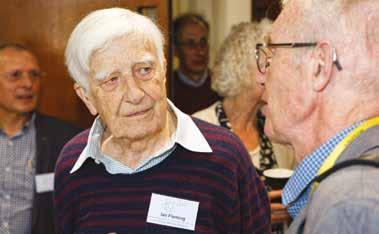

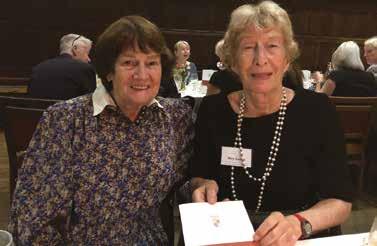
A message from Anne:
“Mary Garson and I were delighted to find that we had been placed next to each other for dinner, it was so much fun meeting up again after over 50 years. I will always remember the two Marys, Mary Garson and Mary Ambrose, who I was privileged to have as my first two chemistry supervisees in the Lent Term 1972, two Newnham stars! I was a Newnham graduate in the second year of my PhD in the Lensfield Road Chemistry Laboratories, supervised by Colin Reese with Jim Staunton kindly keeping an eye on me in Cambridge during the third year of my PhD as Colin had left for a Chair in London. Dr Delia Agar, the delightful Director of Studies for undergraduates studying Physical Sciences at Newnham, continued to look after her chemists after we had graduated so it was no surprise to find I was supervising two exceptionally gifted Newnham chemists.”
Dr Jonathan Wills (Jesus 2000) completed his PhD in the Balasubramanian group in 2004. He is a partner in intellectual property law firm Mewburn Ellis and a regular giver to the department.
Like many students, Jonathan was inspired to study chemistry by a “fundamentally good” chemistry teacher at his local high school in West Lothian. “He was full of enthusiasm for chemistry and made it fun.”
After completing his undergraduate and master’s degrees at the University of Edinburgh, Jonathan joined the Balasubramanian group as a PhD student, where he worked on solid phase chemistry, making molecules on polymers. He also made compounds that were supposed to bind to G-quadruplexes. “It’s good to see the work we started 20 years ago still going strong,” he says.
Eye for details
When Jonathan began looking at potential career paths, a friend recommended becoming a patent attorney. “She said you get to do lots of science, it’s intellectually stimulating and challenging—in a good way.”
Was she right? “Yes, it has worked superbly,” smiles Jonathan, who is now a senior partner at Mewburn Ellis, one of the biggest patent firms in Europe.
“The qualities a patent attorney needs are very similar to those of a good scientist,” he continues. “An eye for details, good recall, and good communication skills.”
Plus, you get to keep doing science: “Patent attorneys are scientists first,” he explains. “We really are doing science everyday: reading journals and theses and talking to clients about their inventions. I still have the scientific interest and curiosity.”
Cambridge connection
Jonathan works with many Russell group universities and their associated spinouts and innovator firms, in addition to chemical companies in America, Canada and Japan.
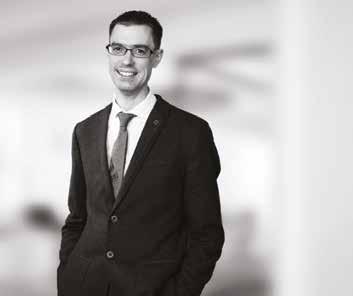
He also still does a lot of work for individual researchers in the University and for Cambridge Enterprise. He has worked with Oren Scherman, Shankar Balasubramanian, Tuomas Knowles and the late Chris Abell, among others. “It’s nice to still have that connection,” he says.
Another connection is Grey group spinout Nyobolt, which is developing ultra-fast charging batteries. Earlier this year Nyobolt gave its first live demonstration of a battery which successfully charged a specially-built sports car from 10% to 80% in under five minutes. “They started small and have become an innovative company whose quality of work of very high,” says Jonathan, who helped with the first patent and still regularly visits Nyobolt’s headquarters in Milton: “We try to understand everything that is going on in the labs so we can protect the intellectual property,” he explains. “Plus, I got to see the car!”
Giving something back
Jonathan is a regular giver to the department, and his support has grown steadily over the last three years. What inspired him to become a regular giver? “I don’t know, it’s not obligation, I just feel that as a partner in a law firm I earn a good wage and ought to give something back to the places who helped me get where I was, particularly now because of the funding crisis for both universities and schools.” Jonathan also gives to Jesus College, the University of Edinburgh and his former schools.
Potential career
“We’re always very interested in people joining the profession,” says Jonathan. “We have lots of people from Cambridge Chemistry because we know they have been taught well. We have people who worked for Shankar, David Klenerman and Stuart Warren – we try very hard to keep the profession visible and to encourage people to think about it as a profession.”
Ron Davies turned 92 in September, but he hasn’t retired yet. “It’s too late for me to retire now,” he smiles. Ron is Chairman of Ames Goldsmith, a company involved in precious metals catalysis. Precious metals are a necessary component in many industrial applications, from solar cells to chemotherapy.
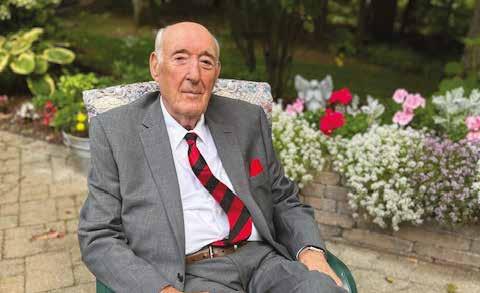
Before Lensfield Road
Ron started at Jesus College to read the Natural Sciences tripos in 1953. Ron says it was ‘largely by luck’ that he got into Jesus, at a time when they were starting to think about improving diversity. He came from a relatively poor background, and was awarded a London County Council scholarship to Bancroft’s school in Essex, which also supported him through university (“to my amazement!”).
Ron’s courses were held in the old Cavendish Laboratory on Free School Lane and the chemical labs on Pembroke Street (the Lensfield Road building was not opened until 1958). “They were very old labs, which nonetheless worked well,” he recalls.
Ron has many fond memories of his Cambridge tutors. One in particular was Dr Alan Sharpe, who taught him thermodynamics. “I met Dr Sharpe at a function 40 years later and said
‘you probably don’t remember me Dr Sharpe.’ He replied: ‘I remember you very well, I thought you were going to be my first failure.’”
I’ll start a business
After graduation, the University placement service arranged an interview with Johnson Matthey. “They refined precious metals and I thought it would be interesting to work with them.”
Ron worked for Johnson Matthey 17 years in the UK and was then transferred to Philadelphia. Later Ron left to found a business with partners and friends George J. Benvegno and Jack Manley. The company initially made chemical salts. Now called Ames Goldsmith, the firm has about 400 employees in 12 different plants around the world.
They also have an unusual philosophy: “We say it’s necessary to make a profit,
but it doesn’t really matter how much that profit is. If we have an operation that is losing money we work with it to make more useful products or work differently, and when they become profitable we go away and leave them alone.”
Ron returns to the UK once a year to travel and to attend the Jesus College St Radegund dinner for college benefactors. He has donated to Jesus for a number of years. “I’m interested in supporting students, many of whom would not otherwise have the opportunity to go to places like Jesus. I’m also interested in the teaching staff and making sure they’re adequately paid so that we can attract the best and the brightest in the world.”
Ron’s gifts also fund Professor Stuart Clarke’s position at Jesus as a Ron Davies Fellow in Natural Science. “I happen to think he’s a wonderful person aside from being a wonderful chemist,” he says. Most recently Ron has given £20 thousand to pay for five summer internships in chemistry over the next five years. The internships are not restricted to Jesus students or to a particular topic.
He says: “When I left college I had very little idea of what I was going to do. I threw myself on the mercies of Johnson Matthey, but I had no understanding of what I was going to find or what was expected of me when I got there. I think these internships will help students understand more about research and what might be expected of them in the real world. This is something I can help with.”
The department has awarded three PhD studentships in a pilot Widening Participation scheme aimed at tackling the under-representation of certain groups in Chemistry and in the University.
“These are excellent students who are highly valued,” says Tessa Blackman, who was the department’s postgraduate student adviser during the admissions process. “They would have been accepted without the Widening Participation criteria, but they might have found it difficult to get funding if we couldn’t also look at additional criteria, such as whether the applicants had received free school meals, were the first generation of their family to go to university, had caring responsibilities or were mature students.”
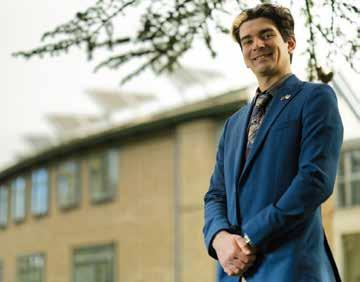
Zedric Grosvenor EPSRC studentship
Zed’s path to the department has been unusual. Zed’s mother worked in the police force and was physically disabled after being attacked. When growing up, Zed acted as a carer for his mother, helping around the house and pushing her wheelchair. Because his father can’t drive, once Zed got his licence he also drove his mother to hospital appointments and other engagements.
In 2018, Zed completed a BSc with Honours in Forensic Science at Anglia Ruskin University. He found he had a knack for fire investigation, and his final award-winning project was on the detection of ignitable liquids from
human hands and skin. “I really enjoyed that project and always wanted to return to it,” he says. But somehow life intervened.
During his undergraduate studies, Zed’s mother unexpectedly died. With his father’s encouragement he completed his degree, but Zed then returned home to help his father cope with the loss, the house and the paperwork.
During that time, Zed discovered the Royal Society of Chemistry’s teacher training scholarship programme for talented students who want to train as secondary school science teachers. He won a scholarship, and completed the course at the University of Bedfordshire, near his home. “I enjoyed teaching, absolutely,” he says. “With secondary students, it’s not so much teaching them as giving them direction and seeing them teach themselves.”
When things became difficult during lockdown, Zed remembered the research he had done at Anglia Ruskin and really wanted to complete it somehow. “I saw Stuart Clarke’s papers online and was interested. We met for an interview, and I applied.”
Zed was accepted to complete an MPhil in the Clarke group last year. “Rather than just experimenting with different products, I was learning the science of how and why they worked. I really wanted that fundamental understanding,” he says, so he decided to apply for the PhD.
Zed is now investigating how colloids could reduce the flammability of certain pharmaceutical creams and cosmetics. “This is a good match with my research looking at clay-based absorbents and how they interact with flammable liquids,” he says. The commercially sensitive project has received interest from the pharmaceutical industry.
Like many PhD students, Zed gives demonstration lectures to undergrads, so he still gets to teach. “To see the undergrads learn and gel as a group is great. I’m really happy now and love what I do.”
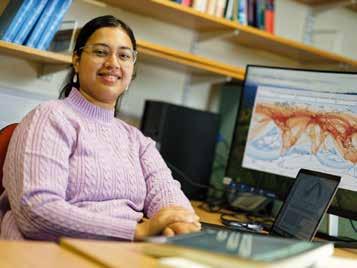
Zainab Hakim
Yusuf Hamied studentship
Zainab is a mature student who has two young children, aged three-and-a-half and 14 months. She completed an undergraduate and master’s degree in Physics at the University of Pune in India, where she became involved in a national initiative, under the supervision of Dr Gufran Beig, to measure pollution levels and air quality throughout India.
After Zainab got married, she moved to the UK with her husband. She initially found a position as a research assistant in Professor Alexander Archibald’s atmospheric chemistry research group, but due to family circumstances she took time out, first to work for Satavia, a startup which is working to make aviation greener, and latterly to have children.
“When I first started working in this area it was mainly out of curiosity, but I gradually started to understand the gravity of the issue,” Zainab says. “Now that the children are older, I am looking forward to getting a PhD and working with Alex on the bigger picture of air pollution and its impact on climate change.”
Zainab has overcome personal and professional challenges to return to academia. “Being in the UK, we don’t have any family here to rely on,” she says. She notes that the University has been very supportive. “The children have a place in the University nursery at Eddington. As a PhD student I was given priority, and the University has also helped with some of the funding because of our household income. The funding through the Yusuf Hamied scholarship also made it possible for me to come back.”
Zainab is thrilled to be working with Alex again. “Because I worked with him before I know that he’s amazing both in his research and as a mentor and a supervisor. Having an understanding supervisor makes a big difference.”

Shuresh Ghanbari Saheli Yusuf Hamied studentship
Shuresh, whose parents are from Iran, grew up in Blackburn. “They wanted to give me a better life,” he says. Shuresh was always interested in physics and maths. “Although I went to a good school, I got teased a lot,” he recalls. “But that turned out to be the best thing that could have happened because it gave me time to study rather than trying to impress others.” Even so, Shuresh became a skilled footballer, going on to a semi-professional level. “But then I decided to stick with physics!” he says.
Shuresh completed an undergraduate and master’s degree in Physics at University College, London. Towards the end of his degree he became interested in neuroscience, but after several internships decided he preferred looking at the fundamental science. “I like working from the bottom up,” he says.
In the Knowles group, Shuresh has been able to combine his interest in neuroscience with his original love for physics and maths. He is looking at the kinetic aggregation of proteins, and how this is implicated in degenerative diseases. This is mainly theoretical, but he can work closely with the experimentalists to check whether his calculations are supported by the lab results. “This is one of the great things about being in the Knowles group,” he explains.
Shuresh is the first generation of his family to go to university. “My parents are so proud, they are over the moon,” he says. He loves being in Cambridge. “Cambridge is lovely, very quiet and beautiful. Amazing is the best word.”
Meet this year’s summer interns, who each completed an eight-week project in a research group, thanks to generous donors Wyn Lewis-Bevan (Churchill 1979), donors to our Chemistry@Cambridge Opportunity Fund, and the EPSRC.
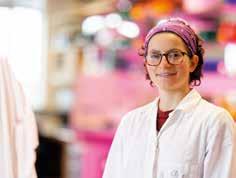
Tom Peretz, Zhang group
Tom (Fitzwilliam) completed Chemistry Part III last year and is now doing the Integrated Master’s Degree.
My project in the Zhang group involved investigating bacterial biofilms, which is part of of a longer-term project to prevent biofouling in healthcare. I learned many new lab skills using new equipment and new techniques. I also learned that things don’t always go as expected: adapting after initial challenges was a big learning point for me and one I am really happy about.
This internship has given me some insight into life as a researcher, so after completing my integrated Master’s degree I intend to start looking for PhDs or other research jobs. I would like to express my gratitude to Wyn LewisBevan for making this opportunity available to me. By learning and developing my scientific knowledge as well as helping in useful research I hope I have made the most of this kind donation.

Rebecca Driver, Cox lab
Rebecca (Selwyn) completed Chemistry Part II last year and is now in Part III.
My main aim when applying for the internship was to learn and develop the practical skills I’d need for my Part III project. In the Cox group I was looking at confined water. I learnt a lot of practical skills, like how to use a Linux environment, and confidence in Python programming. It also helped me get to grips with running and understanding molecular simulations. The most important skill I’ve learned is thinking like a researcher – especially when doing computational work.
I am incredibly honoured to have been funded by the Chemistry Opportunity Fund and I would like to thank all the donors who have supported it. This project has been the academic highlight of my time in Cambridge (so far)! I’d also like to thank Anna Bui and Dr Stephen Cox for their guidance, time and support, and everybody in the Cox Group for making me feel so welcome!
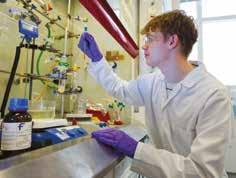
Ben Langabeer, Webster Lab
Ben (Homerton) completed Chemistry Part II last year and is now in Part III.
When I saw this opportunity I decided I shouldn’t rule out going into research without getting some insights first. I am interested in becoming a patent attorney, but this internship has made me consider doing a PhD after Part III.
My project in the Webster group was using iron catalysts to optimise hydroamination reactions. I had the chance to practise techniques I had learnt in the undergrad teaching labs and I also learnt the importance of the thorough planning of an experiment before carrying it out.
Many people, including myself, need to work in the vacation periods. It is likely I would have pursued something else if this internship wasn’t funded. I’d also like to thank everyone in the Webster group for being very welcoming, and for all the useful knowledge I received during my time in the lab.
“I am excited by the idea that future Part II students will complete a practical that I helped develop.”
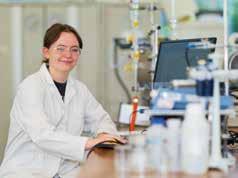
Katie Beken, Clarke group Katie (Jesus) completed Chemistry Part II last year and is now in Part III.
My project in the Clarke group was to design and implement two undergraduate practicals that will accompany the new Quantitative Electrochemistry course for Part II students. I was particularly interested in this project as the practicals are the part of the degree that I enjoy the most.
A large portion of my work focused on optimising a protocol to produce a glucose biosensor, which had to be robust enough to run a practical. The experience made me appreciate how much work has gone into all the teaching material the department uses and has definitely confirmed my interest in research.
I am grateful to Wyn Lewis-Bevan for the opportunity to gain some invaluable experience of what research can be like and to develop many useful skills that cannot be learned in a lecture theatre.
The project was very rewarding and I am excited by the idea that future Part II students will complete a practical that I helped develop.

Joseph Whitby, Dydio group
Joe (St John’s) studied Natural Sciences and specialised in chemistry.
I had previously only done short placements in industry and nonchemistry, so I wanted to get a feel for the cutting edge of what I had learned in lectures and to get some hands-on experience in a synthetic lab.
My project was looking at palladiumbased catalysis for a wide range of reactions, which involved preparing and synthesising substrates, testing reactions, and making carbonyl compounds.
I learned a lot about the practical challenges which must be overcome with research, as well as how rewarding it can be when (if) it all goes to plan! I also used a lot of new techniques I had not come across in the teaching labs like using a glovebox, working with pressurised gases and GC-MS characterisation.
I am incredibly thankful to the donors who have helped to give me this amazing insight into the world of research. I’m now considering applying for master’s programmes in organic chemistry, which I had previously not thought of doing.

Jessica O’Flaherty, Menkin Lab Jessica (Robinson) completed Chemistry Part II last year and is now in Part III.
I wanted to get some research experience and I was inspired by Dr Menkin’s projects in the battery research sector. I used electrochemical methods to predict and detect soft shorts in zinc aqueous cells. Soft shorts eventually lead to battery failure, a major issue with zinc aqueous cells.
The internship has confirmed that I would love to stay in the battery sector and specifically sustainable energy storage applications.
This internship would not have been possible without the EPSRC funding. It’s given me new confidence that I can do something like this in the future.
I think these internships are a very good idea and I would advise anyone who does not have research experience to apply.
If you’d like to find out how you can support summer interns or sponsor a PhD student, please contact Head of Department Professor James Keeler.
Dr Leila Nahidiazar interviews PhD student Jonathan Breiter who works in the Vendruscolo and Lee labs.
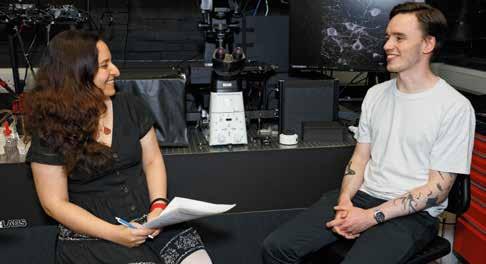
Jonathan is a third year PhD student and is an integral part of the ASAP (Aligning Science Across Parkinson’s) project, where his microscopy research advances our understanding of Parkinson’s disease. His background as a biologist gives him a unique insight into his research, and his upbringing in Germany gives him a different perspective on Cambridge life.
What’s the most unique thing about your lab?
I would say the most unique thing is that I actually get to work in two labs! I am at the intersection of the biophysics of protein aggregation in the Vendruscolo lab with huge ultracentrifuges and stinky bacteria, and the Lee lab with engineers who develop, build and improve bespoke microscopes for specific applications. I get to pick the best of both worlds by producing/receiving important protein samples and using the microscopes to look at them.
A lot of people investigate very specific proteins and their involvement in disease but often they study them out of their natural context. Bespoke microscopes allow me to look at disease-relevant proteins in situ, that is, in their biological context – the brain, in my case.
What is the most unusual thing about your research?
To work properly, the bespoke miscroscopes of the Lee lab have to be in the basement because the vibrations in the building which affect readings are lowest there. They are also incredibly sensitive to any stray photons so I spend quite a lot of my working day in total darkness.
Why microscopy?
I will often spend the majority of my day meticulously preparing samples so the reward of getting a beautiful set of data out of a microscope is like nothing else.
Plus, the images I take look very pretty and I can send them to my friends.
makes Cambridge unique?
One thing I continue to notice about Cambridge is that the people who work in the university are all incredibly dedicated and driven. Everyone I’ve interacted with has a clear determination and drive to achieve their research goals which is a very encouraging environment to exist in as a PhD student.
Does anything stand out?
The wealth of guest speakers, invited
talks and events which I have found to be uniquely diverse and fascinating in Cambridge. I have chatted to the former Federal Minister for Defence of Germany over dinner as well as seen Nobel laureate Professor Jennifer Doudna speak about her discovery of CRISPR Cas9.
Is there anything that you remember from your first days in Cambridge?
The roads! It will sound funny but the lack of quality of the road surface was my first culture shock, especially coming here from the spotless roads in the Netherlands where I did both my Bachelor’s and Master’s degrees.
And how is Cambridge at the end of your PhD?
Now, after almost three years, I enjoy many things outside of the lab, like going to see concerts, cycling and rock climbing.
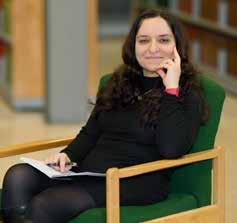
Leila is a Senior Research Associate focused on super-resolution microscopy. In her free time she is a writer and poet and has published two novels in Persian and has worked as a columnist for UTNieuws. Originally from Iran, she lived in the Netherlands before moving to Cambridge.
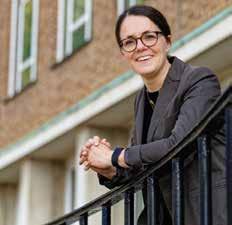
The 2024 AstraZeneca prize in synthetic chemistry has been awarded to Assistant Professor Ruth Webster for her productive early career and innovative research, particularly in iron catalysis, which is useful to both discovery and development chemists at AstraZeneca. Find out more about Ruth’s research on page 27.
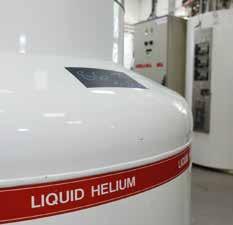
Per a key recommendation in a study led by Nigel Topping, UN Climate Change High Level Champion for COP26, the University will no longer accept research or philanthropic funding from fossil fuel companies whose business models do not align with net zero 2050, unless there are exceptional circumstances.
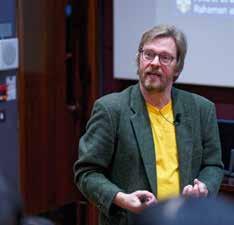
Professor Erwin Reisner was awarded the Royal Society of Chemistry 2024 Tilden Prize for Chemistry in June, for his “pioneering work on solar chemistry, developing devices that capture sunlight and produce sustainable fuels and chemicals from carbon dioxide, biomass and plastic waste.”
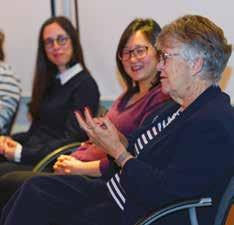
In October the student-run Gender Equality Network (GEN) hosted a panel discussion featuring women across all stages of the research journey. At the event, PhD student Jess McConnell, postdoctoral researcher Gea Cereghetti, Assistant Professor Jenny Zhang and Emeritus Professor Jane Clarke discussed their career paths and experiences as women in science.

Professor Gonçalo Bernardes was awarded the Royal Society of Chemistry 2024 Corday-Morgan Mid-Career Prize for Chemistry in June for his “design, development and application of targeted therapeutics, including small molecule-based RNA degradation and conditional activation of chemotherapeutics.”
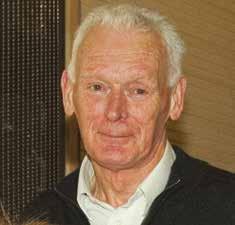
Many alumni will remember David Watson, who died on 10 October. David worked in the department for a total of 47 years: an astounding achievement. His final position was Department Secretary, the senior departmental administrator, a role he fulfilled with great skill and distinction.
If you have memories of David, please send them to news@ch.cam.ac.uk.
The Menkin group has introduced a new method to image batteries which could lead to safer and more efficient energy storage.
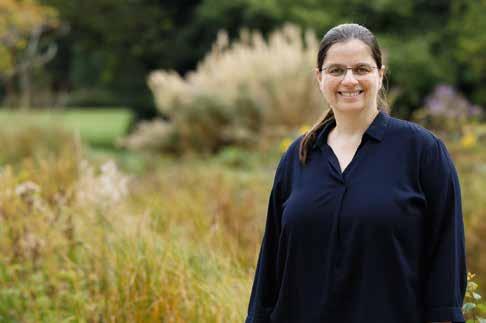
The researchers used the new method to measure the performance of zinc metal batteries, although it can also be used with sodium, lithium-ion and other battery types.
Dr Svetlana Menkin, who led the research, says: “Battery safety and longevity are critical for electrification and renewable energy storage. Our research works to realise a more sustainable generation of batteries.”
Like other batteries, a zinc metal battery contains two electrodes and a separator which are immersed in a salt solution called an electrolyte. However, zinc-based batteries are not yet
commercially viable because dendrites, which are needle-like structures, damage the battery and reduce its lifespan.
The researchers decided to address this problem by testing how different concentrations of electrolyte affected dendrite formation. Using their new methodology, they discovered that batteries with a less concentrated electrolyte solution performed better and more consistently over many cycles of charging and discharging.
Second year PhD student James Simon, who worked closely with Simon Dowe from the department’s in-house
mechanical workshop to design the set-up for the imaging apparatus, says: “Aqueous electrolytes are low-cost, safer and more abundant, which are huge advantages when developing zinc metal batteries.”
The team tested two concentrations of a water-based electrolyte in a zinc metal battery about the size of a pound coin.
The electrolyte transfers charge between two plates inside the battery. When a zinc metal battery charges, a layer of zinc builds up on one electrode, which degrades when the battery is in use. The zinc can also grow in needle shapes called dendrites. If a dendrite touches the opposite electrode, this can short the battery, drastically decreasing efficiency and leading to battery failure.
In their experiment, the researchers found that the battery with dilute electrolyte worked consistently, with good surface conductivity for many cycles. In contrast, the battery with concentrated electrolyte softshorted by the tenth cycle and had reduced performance. This is because the concentrated electrolyte caused hotspots on the interface promoting dendrite growth, which shortened the battery life.
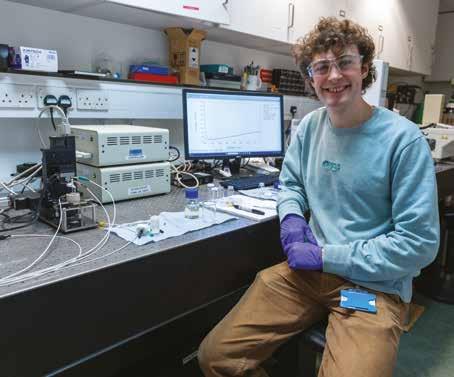
In situ measurements
The team used scanning electrochemical microscopy to monitor electrochemical changes within the batteries as they were charging. This allowed them to visualise how the interface changed inside the battery as it charged and discharged.
They also used X-Ray photoelectron spectroscopy and Raman spectroscopy to determine the composition of the electrodes’ interfaces, and electrochemical impedance spectroscopy to measure their conductivity.
They concluded that if the interface is homogeneous electrochemically, then the battery has a longer cycle-life.
Zinc metal batteries are considered more sustainable than alternatives
like lithium-ion batteries, which are typically used in phones and other consumer items. Zinc metal batteries use water-based electrolytes instead of organic solvents, and the salts used have a lower environmental impact because they are non-fluorinated and have fewer additives.
Producing zinc metal batteries is safer and does not require an energy-intensive process or highcost production facilities, and they are easier to recycle.
Zinc metal batteries are also safer than lithium-ion or sodium batteries because they do not catch fire in the unlikely event of catastrophic failure.
James says: “We hope this research will lead to safer, more efficient batteries.”


Scanning electron microscopy visualisations of zinc forming on the surface of the battery. This example shows zinc being distributed evenly in the dilute electrolyte after five cycles of charging and discharging.
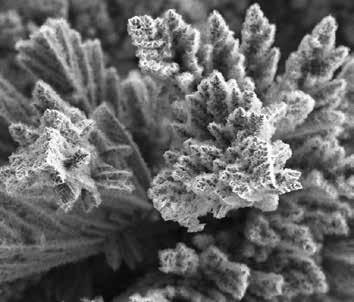
Zinc needles stretching out as they form on the surface of the battery with concentrated electrolyte. This battery shorted after ten cycles of charging and discharging.
French scientist Dr Pascal Mayer shared in the 2022 Breakthrough Prize and the 2024 Canada Gairdner International Award with Professors Shankar Balasubramanian and David Klenerman for the development of Next Generation DNA sequencing.
Dr Mayer recently visited the department for the first time, when we took the opportunity to find out more about him.
I grew up in Stiring-Wendel, a small town in the mining region of Moselle, France. Many of my friends thought they’d make a career in mining, but I was aspiring to something different. I’ve always been interested in complex systems and how they work and as a high school student I convinced my father to buy me a programmable TI 59 calculator, which I used to program a neural network. It was totally useless of course, but it helped me realise I wanted to study biophysics, which was the closest thing you could get to systems biology in those days.
‘Faire du bricolage’
I am happy to agree that I am a solutions guy and, when needed, I am also good at bricolage - what you call DIY. When I was doing my PhD at the Charles Sadron Institute in Strasbourg, the sophisticated optical measurement I was making was very sensitive to vibration but we didn’t have the budget to buy an anti-vibration table. So I put together a large concrete plant pot with a piece of granite from a tombstone merchant and an air mattress, which performed perfectly!
For my postdoc positions at the University of Ottawa and CNRS Paul
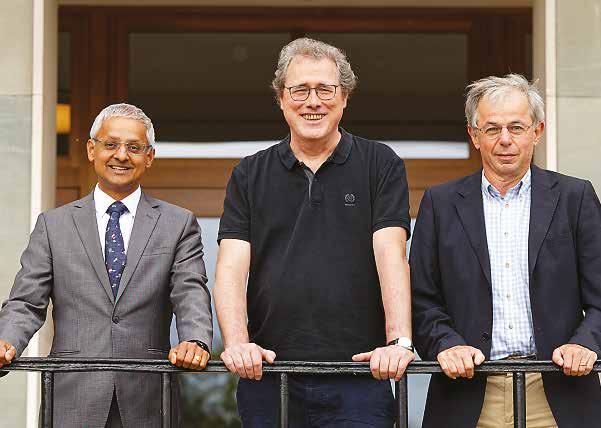
Pascal Research Center I worked on electrophoresis-based DNA sequencing, which at the time was very cumbersome and time consuming, as well as innovative alternative methods. I wanted to find a better way.
When I joined the Glaxo Wellcome Institute of Biomedical Research in Geneva in 1996, I got its scientists interested in my idea of massively parallel DNA sequencing using surfaceamplified microclusters of DNA, which I called DNA colonies. The work went well and the methodology we developed was patented in April 1997.
Meanwhile a biotech company called Serono (now Merck-Serono) took over the Institute and continued funding the project. We needed to develop the technology and its applications further to their full potential, so I convinced Serono to incorporate a spin-off called Manteia Predictive Medicine. This was funded for another two years, but in 2003 Serono’s senior management decided to cut costs and out went the funding. Serono sold the Manteia IP to
David and Shankar’s company, Solexa, which gave them the final piece of the puzzle for their sequencing technology.
Since then I’ve been involved in several start-ups, and in 2014 I co-founded Alphanosos, which uses AI algorithms of mine to guide the rapid discovery of safe, efficient and eco-responsible therapeutics, such as alternatives to traditional pharmaceutical antibiotics towards multi-resistant bacteria. We even developed an animal model validated anti-coronavirus therapeutic candidate in early 2021, but clinical validation and licensing are yet to be achieved.
The Breakthrough Prize and Canada Gairdner Award
I was very happy to be awarded these prizes of course. It was a very important step for me and all the people who worked beside me for all that time. I feel it validates my ideas and the work of the “Geneva branch” of next generation sequencing.
Cellulose glitter developed by the Vignolini group has been found to be environmentally safe and sustainable, outshining plastic alternatives.

Glitter is a major pollutant and microplastic that is commonly found in sewage sludge and wastewater treatment plants. But now it’s been shown that sustainable glitter developed in Professor Silvia Vignolini’s Bio-Inspired Photonics group is not toxic to living organisms and does not impact soil health.
Biodegradable glitters?
Previous research on some commercially available biodegradable glitters indicates they could be just as harmful or even more toxic to aquatic organisms than conventional Polyethylene Terephthalate (PET) glitter, as most biodegradable varieties on the market need to be coated in a coloured aluminium layer and topped with a thin plastic layer.
But the Vignolini group’s glitter is made from Cellulose nanocrystals (CNC), which avoids using aluminium or plastic layers. Cellulose is one of the most abundant materials in nature and can be extracted from many different biological sources, including cotton and waste.
To determine whether their CNC glitter is more eco-friendly than conventional PET glitter, researchers from the University of Melbourne and the Vignolini group investigated and compared the levels of toxicity of both materials in terrestrial environments.
Soil critters
Different concentrations of both glitters were tested on a type of soil organism called a springtail, which is commonly used as an indicator of soil quality. The findings revealed CNC glitter had no impact on springtails but that PET glitter severely impacted the organism’s fertility.
University of Melbourne Associate Professor Suzie Reichman, who led the research, says: “We found that neither glitter impacted springtail survival or size. However, once the concentrations of conventional PET glitter in the soil reached 1000 mg glitter per kilo of soil, the reproduction of the springtails was reduced by 42 percent. In comparison, there were no toxic effects on springtail reproduction at any concentration of the CNC glitter.”
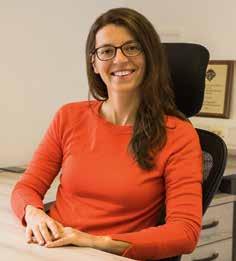
University of Melbourne PhD student Po-Hao (Paul) Chen says: “As springtails are an indicator of soil quality, it’s worrying that the conventional PET glitter affected their ability to reproduce. Fewer springtails being born can weaken their population, which might lead to bigger problems for soil health, like less organic matter breaking down and fewer nutrients being released for plants.”
Silvia says: “This research has shown that CNC glitter has potential as a biodegradable non-plastic alternative to decrease detrimental effects on soil ecosystems, which is a win for the environment and a win consumers.”
Vignolini group spinout Sparxell is creating a range of cellulose-based glitters, sequins and films which contain no mica, titania or plastics and are entirely biodegradable. Sparxell founder and CEO Dr Benjamin Droguet, who completed his PhD in the Vignolini group, says: “Our products are safe and sustainable at a time when society’s need for plant-based circular technologies has never been greater.”
Scientists in Professor Robert Phipps’ research group have developed a new catalyst that could make it easier to synthesise the complex molecules used in areas from perfume to pharmaceuticals.

Radical vs. ionic
Chemical reactions can, broadly speaking, be classified into two distinct types: those in which the electrons move singly and those in which they move in pairs, referred to respectively as ‘radical reactions’ and ‘ionic reactions.’
Historically, two-electron chemistry has dominated mainstream synthetic methods, but in recent times there has been a surge of research into radical reactions. This has been driven by a relatively new technology called photoredox catalysis, which uses visible light irradiation with a special catalyst.
Robert and his team used this technology to develop the new catalyst, which can provide a step forward in addressing a significant challenge in radical chemistry related to hydrogen atom transfer (HAT). HAT is a chemical transformation in which two elementary particles, a proton and an electron, move between two different molecules in a single step, forming a newly synthesised molecule. In some cases, this can also introduce a new stereocentre.
Typically in HAT it is difficult to exert stereoselective control when new stereocentres are formed. But influence over whether a ‘left-handed’ or ‘right-handed’ molecule is formed,
known as enantioselectivity, is important because it gives scientists more control over the characteristics of the new molecule, such as the way it interacts with biological systems.
The researchers made a relatively minor modification to a well-known compound from the Cinchona alkaloid family, which is extracted from tree bark. The Cinchona alkaloids are chiral molecules, which means that they are naturally ‘right-handed’ or ‘left-handed’. These alkaloids have been used for many years as the basis for chiral catalysts in a wide range of reaction types.
They used an excited photocatalyst to oxidise a nitrogen atom in the catalyst structure, which then allowed it to abstract a hydrogen atom from the targeted environments. Because the molecules used as substrates possess symmetry, this hydrogen atom abstraction allows the symmetry to be broken, and this produces new stereocentres. Using their novel catalyst they found that the new stereocentres could be formed with very high levels of selectivity.
The structure of the catalyst means it can transfer its chiral information to the new molecule and then be used again, so only a small amount of it is needed to produce ten times as much product. The catalyst can be used to produce molecules that are many times more complex than the starting materials and may have applications in areas such as pharmaceutical research and even fragrances (the ‘handedness’ of a molecule can drastically impact its smell).
Robert says: “This research is important because hydrogen atom transfer is a really fundamentally important type of radical process which is prevalent in biology and chemistry. We have developed the first catalyst that is able to abstract a hydrogen atom from a substrate with a very high control of enantioselectivity and allow the radical to remain to be used in further transformations.”
Postdoc Dr Antti Lahdenperä, who worked on the project, says: “We have been very pleasantly surprised by the effectiveness of the catalyst system, and it will be interesting to see how widely used it will eventually be.”
It’sbeen a year since Dr Ruth Webster and her group came to our department from the University of Bath. Ruth’s mission is to find sustainable catalysts that speed up essential chemical reactions and she and her team are breaking new ground with the world-class facilities at her disposal.
While many industrial catalysts rely on rare and expensive precious metals, Ruth has set her sights on iron, one of the most abundant metals on Earth.
Ruth explains: “I want to change the way we think about manipulating materials by using iron. Iron is the most abundant metal so using it as a catalyst is important for precious metal conservation.”
Catalysts are the workhorses of chemistry, pushing reactions to happen more quickly without being consumed themselves in the process. They are essential for producing chemicals on an industrial scale but often have an environmental cost in mining or transport. The Webster group’s research into more sustainable catalysts could help reduce the carbon footprint of some chemical production.
New facilities, new chemistry
Ruth and her group regularly use the department’s cuttingedge NMR facilities for their research. Because iron can be a tricky material to study with NMR, they work closely with the NMR team.
“Iron doesn’t behave like a normal metal,” explains Ruth. “A standard NMR scan won’t give us the full picture of what is happening inside iron because of unpaired electrons emitting erratic signals. The department’s broad range NMR scans of iron are unconventional and thorough and wouldn’t be possible without the remarkable facilities and amazing NMR team.”
One project Ruth’s group is focusing on is how to use iron to produce amines, which are essential building blocks in the pharmaceutical industry. Amines are used in many drugs, such as antihistamines, decongestants and tranquilisers. Synthesising amines is an essential process for industry and greener catalysts could have an impact on how they are made. Ruth was recently awarded the AstraZeneca prize for her work in iron catalysis (see page 21).
Ruth’s team also works alongside computational chemists, who use the NMR data to feed machine learning models. This partnership, funded by GlaxoSmithKline, is helping accelerate discoveries that could make a real-world impact on industrial processes. The goal? To design products that can scale from the lab bench to full industrial application – all while reducing environmental harm.

Ruth studied chemistry as an undergraduate at the University of Strathclyde in Glasgow and completed her PhD in synthetic chemistry at the University of Bristol.
Ruth says: “Catalysis made the most sense to me as a student. I loved how it required figuring out which bonds are made and broken. The challenge comes from how quickly these reactions happen.”
After postdoctoral stints and her first independent position at the University of Bath, Ruth and her group have settled happily into the department. The move marks the beginning of an exciting new chapter, not just for Ruth’s research but for the department as well.
See our feature on page 12 about Leah Webster, one of Ruth’s newest group members, and discover how the next generation of scientists is helping shape the future of sustainable chemistry.
In an ambitious step towards sustainability, the department’s new helium recovery system is now up and running. Since its installation at the beginning of 2024, the system has recycled nearly two million litres of helium gas.
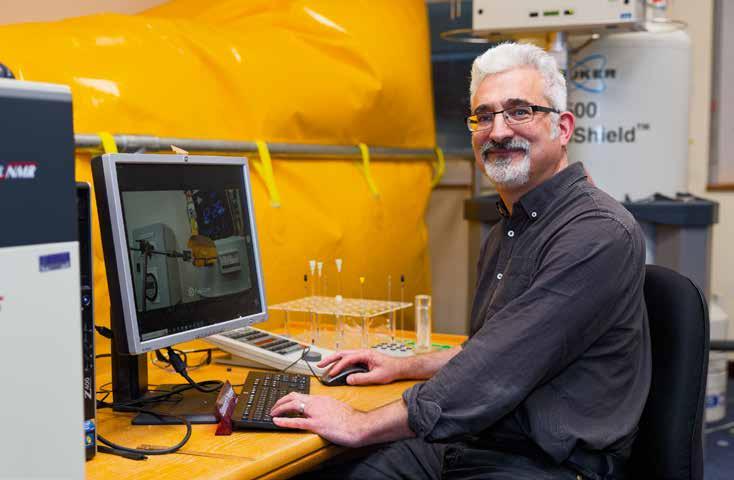
At the heart of this initiative is Duncan Howe, one of the department’s NMR specialists in Analytical Services. Duncan, who has been with the department since July 1995, spearheaded the system’s installation and now oversees the daily operations.
“Retrofitting this into a basement was a challenge but the team managed it within the restrictions of the site,” says Duncan.
This is critical work as, while helium is abundant in the Universe (it is the
second most-abundant element after hydrogen), it is a finite resource here on Earth. The new recovery system helps secure our access to helium gas and although helium itself is not considered a greenhouse gas, our carbon emissions are reduced by cutting down on energy associated with mining and transporting helium.
Laboratories need a lot of resources and our world-class nuclear magnetic resonance (NMR) facility needs liquid helium to cool the electro-magnets
down to near absolute-zero. At -269C the wires superconduct and so can carry enough current to make a magnet powerful enough to observe and separate weak sample signals.
These magnets persistently maintain their magnetic field over decades without having to be plugged into electricity just as long as they are kept at -269°C with liquid helium.
“Helium security is crucial for our science,” Duncan notes. “If we run out, we’re faced with the difficult task of
shutting down our NMR machines. If we had to shut instruments down, it would take six weeks to turn them on again, and consume a vast amount of liquid helium.”
Before the helium recovery system was installed, the helium used to cool the NMR machines would evaporate into a gas and float into space, but now it can be re-used.
The recovery system is a network of pipes that are retrofitted to the NMR machines and lead the warm helium gas to an enormous yellow bag which inflates like a bouncy castle (though not for jumping). Once it’s full, Duncan compresses the gas into cylinders which are transported to the cryogenics facility in the Cavendish Laboratory at the Department of Physics.
The cryogenics facility takes recovered helium gas from all over Cambridge and cools it down to a liquid, then ships it back to be used again. Some of the storage cylinders used in this process have survived since the 1930s, a reminder that sustainability requires using what we have. Last year alone, the facility produced around 70,000 litres of liquid helium from recovered gas.
Dan Cross, who manages the cryogenics facility, comments: “Helium is an incredibly expensive and finite resource. Through recycling, we can use the same helium five to ten times before it’s lost to the atmosphere.”
The facility has capacity to cool five times more helium so there is room to expand in the future.
The helium recovery project was partly funded by the University’s Carbon Reduction Fund, which supports
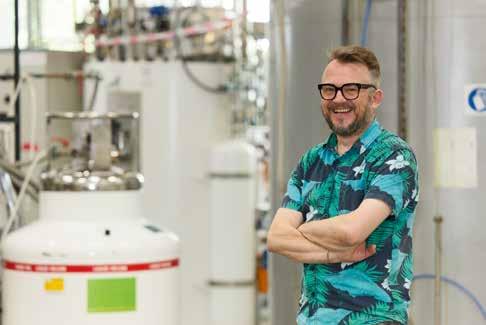

carbon reduction initiatives across the institution.
Matthew Bennett, Assistant Carbon Manager for the University’s Environmental Sustainability Team, comments: “Our work with laboratories is as varied as the research that comes out of them. We engage with the experts working in those environments to design new ways to embed sustainable practices into research.
“We worked closely with the specialist technical staff in the NMR facility to support this helium recovery system, which delivers significant financial and carbon emissions savings.
“We are working with departments across the University to support them to reduce environmental impacts and to meet the University’s carbon reduction targets”
Thank you to Jeremy Freeman (Peterhouse 1954) for this letter which was sent during lockdown and only recently discovered. We apologise for the delay and hope you enjoy the mnemonic.
Dear Editor,
I have recently been reminded of a mnemonic that some of us (Part I students in 1955 or ‘56) devised for the first part of the Periodic Table, from helium to bromine. It was not the best of mnemonics, as I can now remember only about half of it, as follows:
He little benefitted by the kind ness of friends. New ... perfectly soap clean. ... Asses seldom bray ...
He Li Be B C N O F Ne Na Mg Al Si P S Cl A K Ca Ti V Cr Mn Fe Co Ni Cu Zn Ga Ge As Se Br Kr
I wonder if anyone still uses it or can remember the parts I have forgotten.
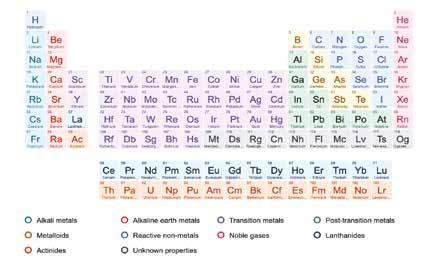
Best wishes to you and the Department in these difficult times.
Regards,
Jeremy Freeman
If you think you can help solve this riddle or if you have another mnemonic then please get in touch at news@ch.cam.ac.uk.
Congratulations to Dr Derek Brundish (Gonville & Caius 1959), who won our spring Chem@Cam cryptic crossword prize draw and has received a sustainable Yusuf Hamied Department of Chemistry travel cup.
Derek recalls his time at the department and his career in chemistry:
“Coming up to Cambridge in 1959, I must be one of a now rapidly decreasing number of chemists who remember lectures in the Pembroke Street building. It was dark and romantic; everything a fresher expected of an ancient university. In my second year I was lectured and had practicals at Lensfield Road.
Several big names in Chemistry were ending their careers: Emeléus, Norrish, Mann, Saunders and Kipping. From the latter and from reading half-subject Biochemistry I developed a keen interest in carbohydrate chemistry and went to Newcastle to study for my PhD with Jim Baddiley, one of the ‘Toddlers’, or the Todd Mafia as we called them.
There I discovered a new class of lipid, the glycosyl diglycerides. These are natural products present in bacteria. I happened to be working on Pneumococcus and was having trouble processing the cell walls. Normally you burst the bacteria, centrifuge to strain away the insides and are left with the cell wall, but these were sticky and wouldn’t clean up.
So I removed the fats by solvent extraction and was gobsmacked that about one third of the weight of the bacterium was lipid. This was a brand new discovery and I got eight publications in nine months! It was fortuitous but they say you make your own luck.
I went on into industry to work in many areas of organic chemistry; radiolabelling, peptide synthesis, phosphorus chemistry, asymmetric synthesis, medicinal chemistry and finally porphyrin chemistry and photodynamic therapy. All thanks to what is now the Yusuf Hamied Department of Chemistry.
Now I’m retired, I’m 84!”
Challenge yourself with a cryptic crossword designed by Loris Marcel, a PhD student in the Zhang lab.
Loris is studying coral bleaching with a particular focus on a group of algae called dinoflagellates that contribute to coral’s beautiful colours. Learning more about the process could help develop strategies to protect corals from climate change.
Across
1. Watches idly or pets cat confused (9)
5. Goes well with beer (the light one) (7)
7. Demon ate blended worm (8)
10. Comes on a plate at the start of the last course (3)
11. Martini? Single or double? (4)
12. Twisted iron makes a roman gloomy (4)
15. Dehydration of a battle, still wet though! (3)
16. Twist left in recipient to make it grimmer (7)
18. For the record, it’s actually missing a poly (5)
19. A holy scratch can save a life (6)
20. Duck stuck in ornate alcove (4)
1. Do not leave modified L-ketones in your closet! (8)
2. Turn off to kill the dinosaurs (10)
3. Well-rounded, like a sibling in a way (3)
4. In the evening it’s coffee without tea (4)
5. Scale, key, green, stone (4)
6. O timetable! Your body needs it in order to function (10)
8. Game, back, deep, goal (3)
9. Chemical pack of enamel (5)
13. Black, branch, skin, virgin (5)
14. Fancy aldehyde? Comes before family (5)
17. The answer to this one? It’ll come back to me (4)


Send a photo of your answers by 28 February to crossword@ch.cam.ac.uk for a chance to win a sustainable Yusuf Hamied Department of Chemistry travel mug. The first correct answer to be drawn after the deadline will win.
Answers will be sent out in our March alumni email. If you don’t receive our emails, please make sure you’ve opted into receiving emails by logging into the University of Cambridge alumni website (www.alumni.cam.ac.uk).
Reserve your alumni tickets now for Professor Peter Wothers’ Open Day lecture, followed by lunch.
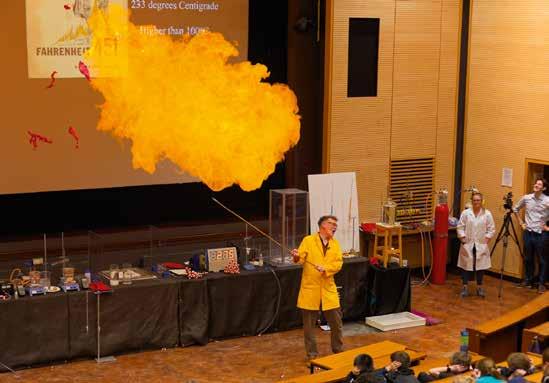
Saturday 22 March 2025
11am to 1.30pm
Yusuf Hamied Department of Chemistry
Reserve your seats for Professor Pete Wothers’ thrilling and explosive demonstration lecture at our Chemistry Open Day.
Once again we have secured 100 tickets exclusively for alumni and their families at the 11am lecture, followed by a buffet lunch. Why not stay for the department’s Open Day to explore hands-on activities, demonstrations and experiments such as liquid nitrogen ice cream and cornflour slime.
This is the perfect chance to welcome family to the department, try some fun chemistry, and have a blast.
Tickets for the event will be popular, so reserve your spot now and get ready for an unforgettable day of chemistry.
Alumni may bring up to three guests, but please note this event is only suitable for children aged 8 and up and will feature loud bangs.
Reconnect, rediscover, and get ready for an electrifying day!
We gratefully acknowledge the support of The Walters Kundert Charitable Trust which makes Chemistry Open Day possible.
Book here: www.alumni.cam.ac.uk/events/chemistry-alumni-lecture-and-lunch